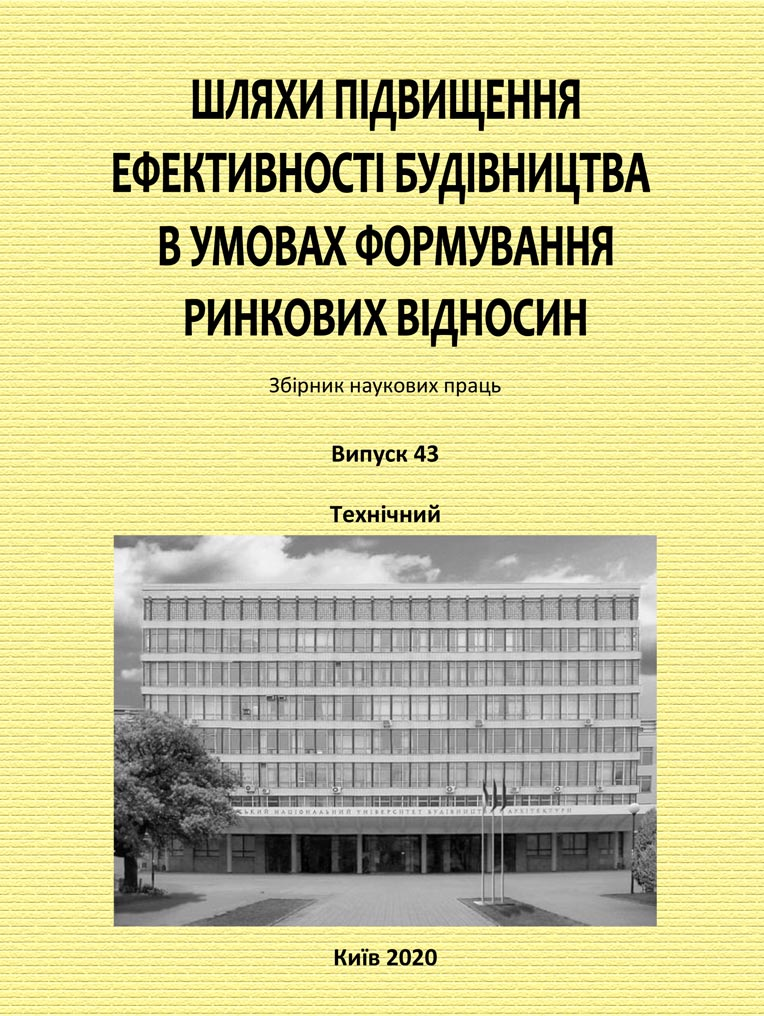Formation of economic and managerial tools for anti-crisis diagnostics of construction companies
DOI:
https://doi.org/10.32347/2707-501x.2019.42.85-91Keywords:
crisis management, economic security, construction company, threats, risks, crisis, financial condition, economic diagnostics.Abstract
The task of the enterprise management is to form an effective management mechanism, to develop measures to overcome financial crises and to eliminate their negative impacts, which requires the need to create a modern economic and management tools for crisis diagnosis of the enterprise.
The purpose of the study is to analyze theoretical and methodological approaches of Ukrainian and foreign scientists on the concepts of "crisis management mechanism" at the operational, tactical and strategic levels of the enterprise.
The article deals with the theoretical aspects of enterprise crisis management. The purpose and tasks of the crisis management of the construction enterprise are determined. The necessity of formation of modern economic and management tools of anti-crisis diagnostics of the enterprise is substantiated.
The author argues that the formation of the mechanism of crisis management of a construction company must take into account the specifics of its activities and general, characteristic of the entire industry, features of construction activity regardless of the objects under construction and their purpose, among which are the following: variability, temporary nature, variety of construction production and the nature of the final products, the technological interconnectedness of all operations, the instability of the ratio of construction work in terms of their complexity and types of extension ohms of construction, the participation of various enterprises in the production of final construction products, the role of climate and local conditions, real estate construction products, long economic cycle and low speed of capital turnover, high cost of construction objects, significant duration of their operation, the need to attract significant amounts of resources, which explains the widespread practice of prepayments and one hundred percent subscription, a high degree of consumer individualization, and more.
Consideration of these features in the development of tools for crisis management of construction enterprises requires the development of separate methods and models purely for construction.
References
1. Stetsenko, S. (2019). The hierarchical model of evaluation of infrastructure risks in construction. Scientific research works of the Institute, №1, 119-129
Sorokina, L. & ets. (2017). Econometric toolkit for financial security management of construction companies. Econometric toolkit for financial security management of construction companies. K.: Kyivskyi natsionalnyi universytet budivnytstva i arkhitektury, Kryvyi Rih: Vydavets FOP Cherniavskyi D.O.
Pogrebnyak A. (2015). Essence of constituent elements of anti-crisis management mechanism at an industrial enterprise. Economic Bulletin of NTUU "KPI", №12, 138 - 147.
Pavlov O.(2010). Anti-crisis mechanisms of state regulation of socio-economic development. [Electronic resource] URL: http://archive.nbuv.gov.ua/portal/Soc_Gum/Nvamu_upravl/2010_4/44.pdf
Khlevitska T.(2008). Mechanisms of crisis management in the system of economic security of the enterprise. Trade and Market of Ukraine: Thematic Collection of Scientific Papers. - Donetsk: DonNUET, №26, 313-318.
Shcherban I. (2010). Formation of a crisis management mechanism for intermediary tourism enterprises. Bulletin of the National University of Water and Nature Management.- №2. URL: http://archive.nbuv.gov.ua/portal/Chem_Biol/Vnuvgp/ekon/2010_2/index.htm.]
Korotkova E.(2003). Crisis management: A textbook. INFRA-M,
Bielienkova О.Yu. & Antropov Yu.V. (2013) The prediction model of economic stability. European Applied Sciences, 8, 161-163.
Babenko, S.H. (2003) Transformation of cooperative systems in transition economies: [monograph]. K. : Naukova dumka.
Sorokina, L.V., Goiko, A. F. & Skakun, V.A. (2019). Empirychne otsiniuvannia bezpeky ekonomichnoho rozvytku pidpryiemstv budivnytstva: yevropeiskyi aspekt. Shliakhy pidvyshchennia efektyvnosti budivnytstva v umov rynkovykh vidnosyn, 40, 3-18
11. Tugai, O. A., Hryhorovskyi, P. Ye., Khyzhniak, V. O., Stetsenko, S. P., Bielienkova, O. Yu., Molodid, О. S. & Chernyshev, D.O. (2019) Organizational and technological, economic quality control aspects in the construction industry : collective monograph, Lviv-Toruń : Liha-Pres.
Stetsenko S. P. (2013) Ekonomichna bezpeka: sutnist i struktura. Investytsii: praktyka ta dosvid, 24, 104-106.
Bielienkova, O.Iu. & Matsapura, O.V. (2012) Riven ekonomichnoi bezpeky budivelnykh pidpryiemstv za intehralnym pokaznykom otsinky mozhlyvosti reiderskoho zakhoplennia Shliakhy pidvyshchennia efektyvnosti budivnytstva v umovakh formuvannia rynkovykh vidnosyn, 28, 23 -31.
Downloads
How to Cite
Issue
Section
License
Copyright (c) 2020 N. Bolila

This work is licensed under a Creative Commons Attribution 4.0 International License.
Authors who publish with this journal agree to the following terms:
- Authors retain copyright and grant the journal right of first publication with the work simultaneously licensed under a Creative Commons Attribution License that allows others to share the work with an acknowledgement of the work's authorship and initial publication in this journal.
- Authors are able to enter into separate, additional contractual arrangements for the non-exclusive distribution of the journal's published version of the work (e.g., post it to an institutional repository or publish it in a book), with an acknowledgement of its initial publication in this journal.
- Authors are permitted and encouraged to post their work online (e.g., in institutional repositories or on their website) prior to and during the submission process, as it can lead to productive exchanges, as well as earlier and greater citation of published work (See The Effect of Open Access).

